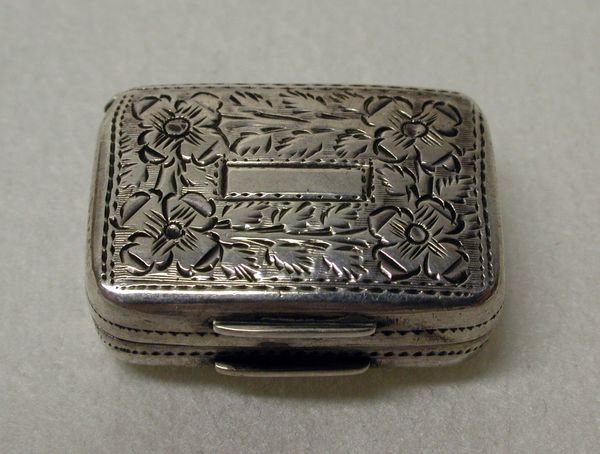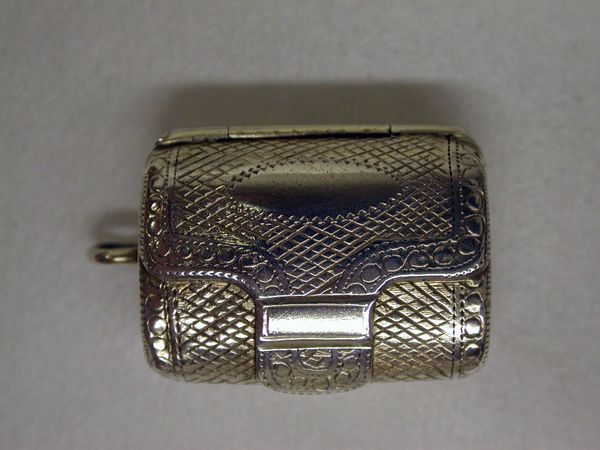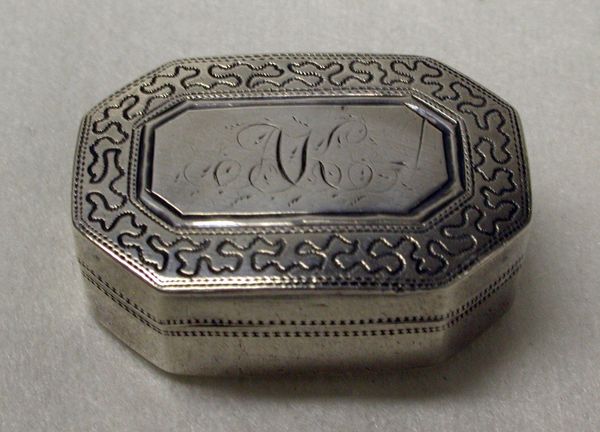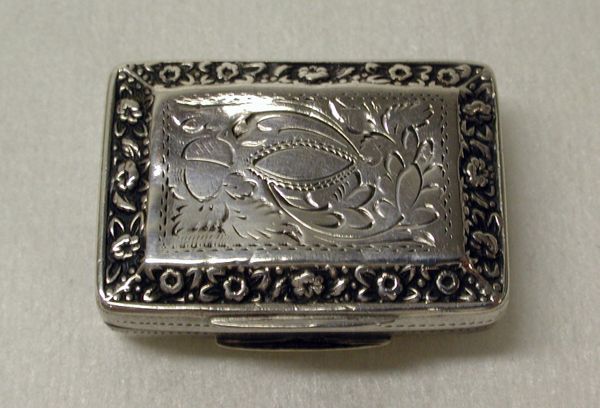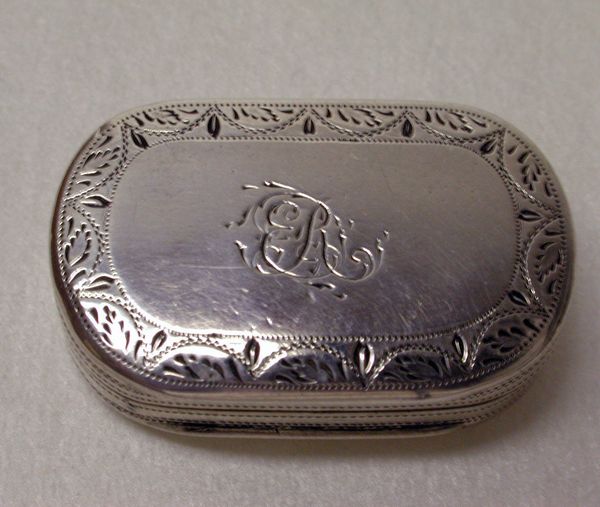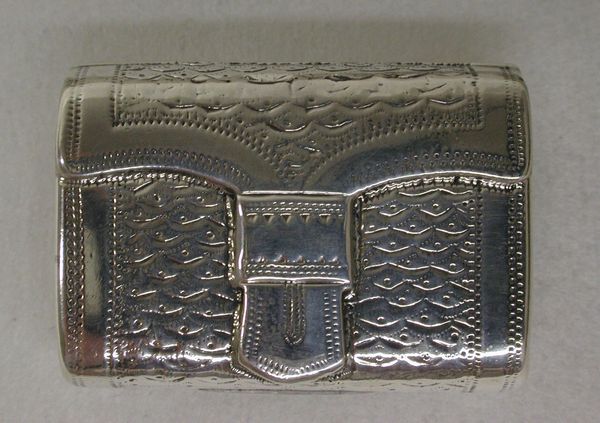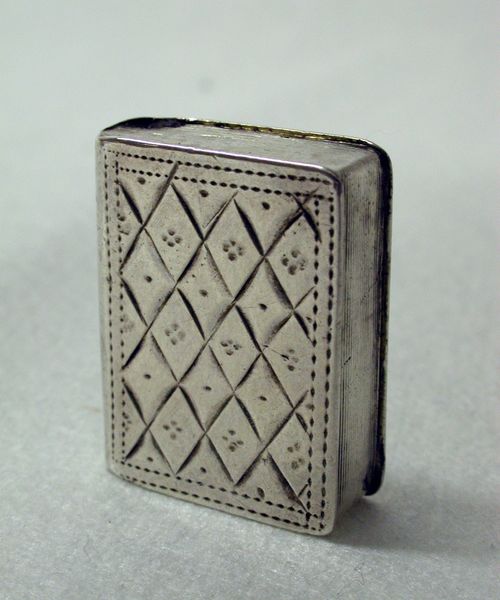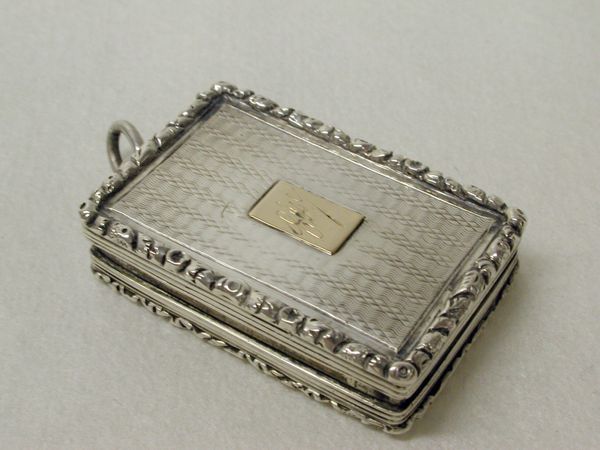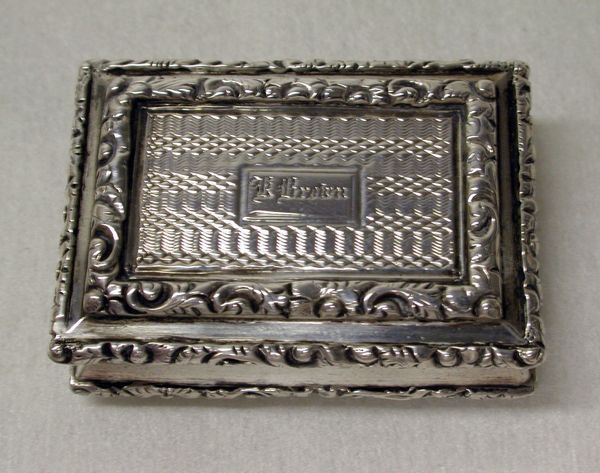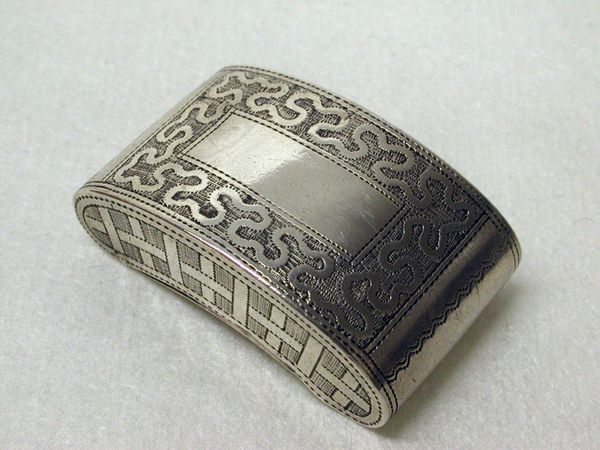
silver, metal, sculpture
#
16_19th-century
#
silver
#
metal
#
form
#
romanesque
#
sculpture
#
decorative-art
Dimensions: Length: 1 in. (2.5 cm)
Copyright: Public Domain
Curator: The object before us, made by Thomas Shaw in 1823, is a vinaigrette box, a delicate example of decorative art crafted from silver. Editor: My first thought is how the intricate surface decoration contrasts with its rather unassuming, rectangular form. It's quite dazzling, really. Curator: The beauty lies in its making. Imagine the skilled silversmith, meticulously piercing and engraving the silver. Consider the division of labor. A design might be created, but various hands actually fabricated these forms of luxury for a particular social class and their needs. It invites consideration of art, craft and process. Editor: Absolutely, but what compels is how that surface dances with light! The contrasting textures and lines guide your eye. It creates a sense of visual harmony even through such small scale. And how it transforms such a utilitarian item into a little treasure, so full of ornamental expression. Curator: Precisely. It's form meeting function through labor and industrial capability. Such decorative embellishments indicate societal value around class and consumerism. One wonders about Shaw himself, his role within the context of English silver production during the early 19th century and access to raw materials. Editor: Although important, focusing on the labor obscures the fact it still achieves perfect unity with its repeating shapes, rhythmic lines and smooth metal. Each small element contributes to the whole, generating a larger visual intrigue, I feel, that also represents class. Curator: That push and pull between individual labor and artistic result, as you say, underscores its complexities as both art object and artifact of early capitalism. It’s also an example of material invention responding to shifting societal preferences around hygienic life. Editor: Indeed. Thinking of form and intention shows how utilitarian items are rarely simple when their function expresses our intentions as clearly as any narrative painting. A reminder that art is everywhere, imbued in things big and small.
Comments
No comments
Be the first to comment and join the conversation on the ultimate creative platform.
